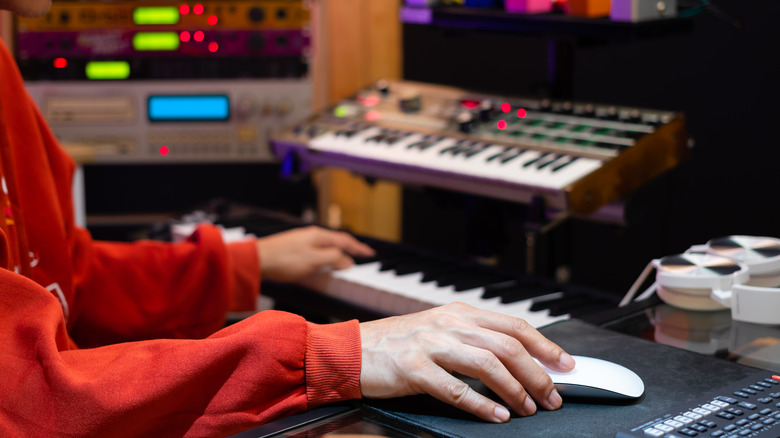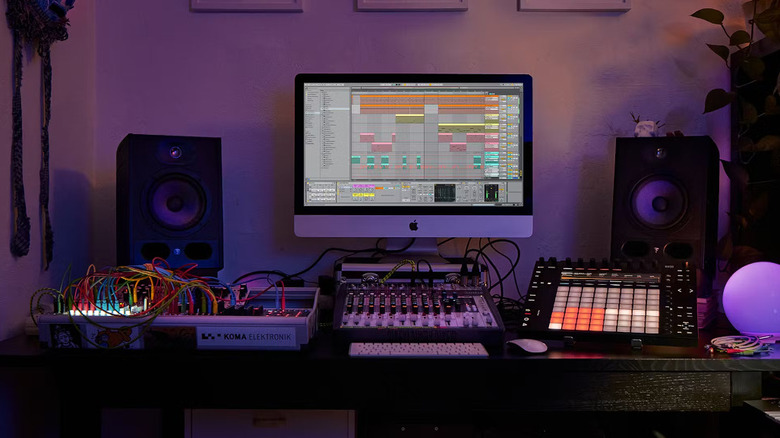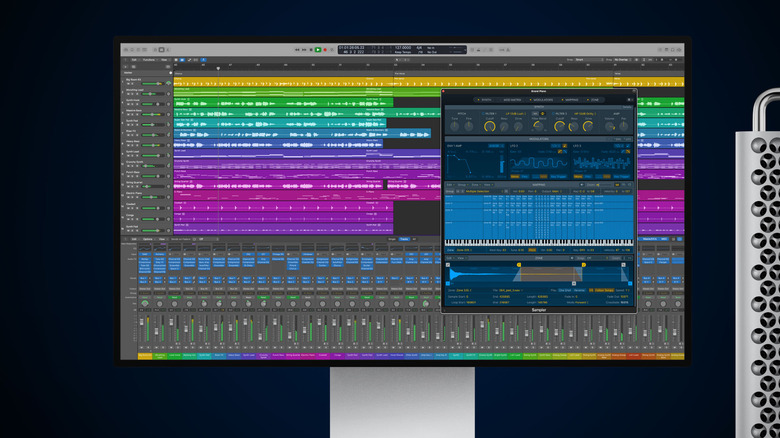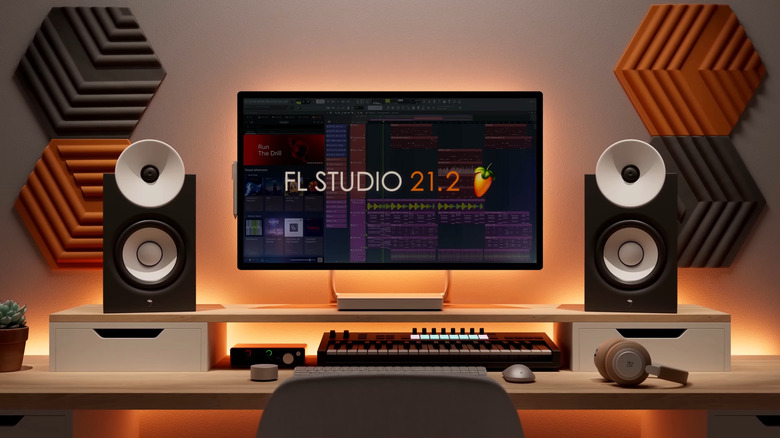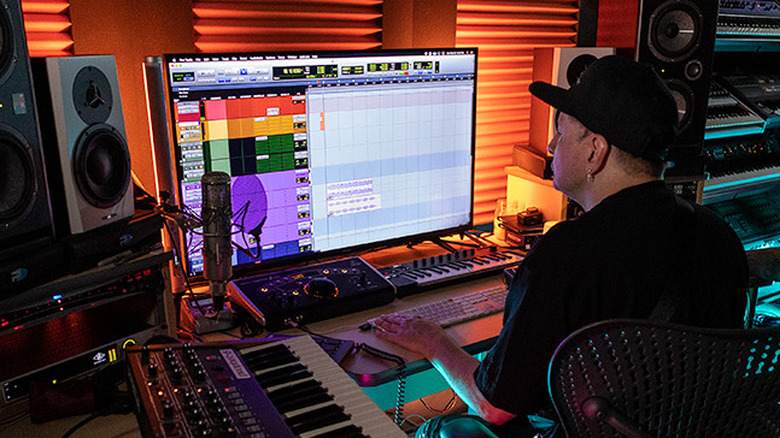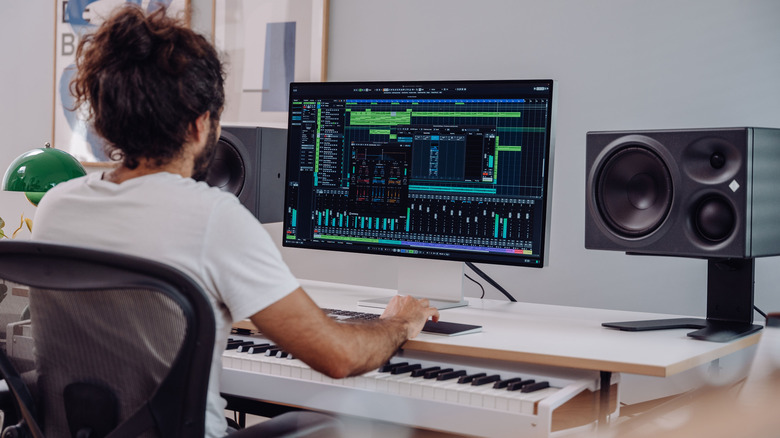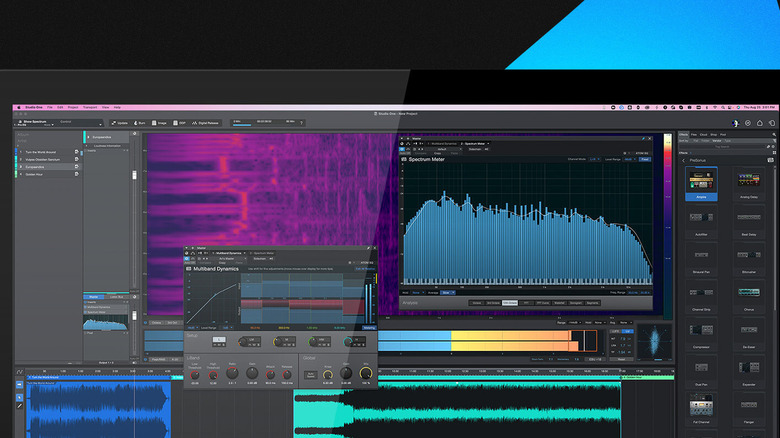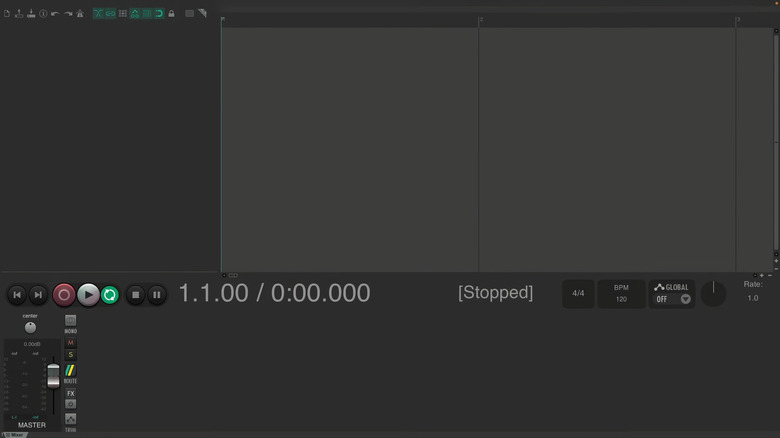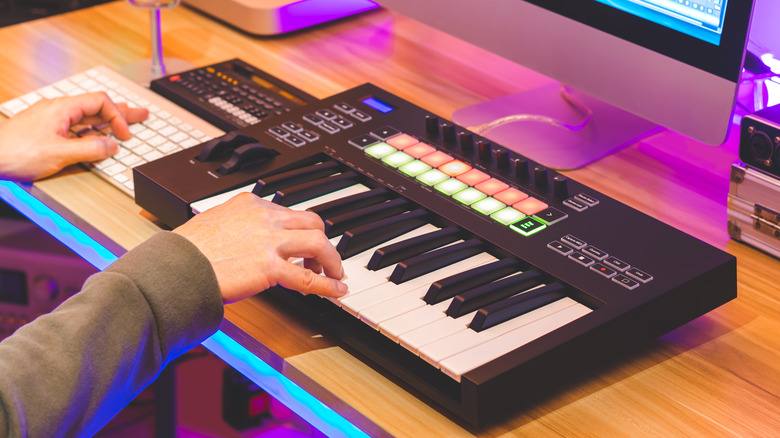How To Choose The Best Music Production Software For You In 2024
If you're looking to get into music production, the first decision you'll need to make is which music production software to choose. A piece of production software, also known as a digital audio workstation, or DAW is an all-in-one suite for recording, editing, arranging, mixing, and otherwise manipulating audio and MIDI. They also interface with plugins such as software synthesizers and audio effects to further refine and shape sound.
Choosing a DAW is one of the most crucial decisions anyone working with digital audio will make. It's the beating heart of your studio, and it will determine everything from your workflow to the plugins and hardware you can use. Moreover, depending on which production software you pick, you may have a harder or easier time collaborating with other musicians in your genre.
For instance, while electronic music and EDM artists tend to prefer Ableton Live, more traditional producers who work with real instruments often prefer Pro Tools, while up-and-coming hip-hop and pop producers often gravitate toward FL Studio. I've got more than a decade of music production experience spanning different DAW software over the years, and this guide will provide a basic overview of each of the most popular DAWs on the market today, including their major strengths and weaknesses, to help you reach the most informed decision possible.
Ableton Live Suite
Over the past several decades, Ableton Live has evolved from a program designed to manipulate loops and clips in live electronic music performances to one of the most popular DAWs on the market. Due to its unique history, Ableton Live has a workflow slightly different from more traditional DAWs such as Pro Tools, as well as several specialized capabilities that have made its users diehard fans of the software. Ableton Live has rapidly become one of the most popular DAWs, especially for musicians who focus on EDM or live performances.
Ableton's interface is divided into two different "views": Session and arrangement. In the session view, audio elements (which Ableton refers to as "clips") can be triggered individually from a grid of sounds. This allows musicians to play dynamic live sets where they have full control over every element of what the audience hears. In production sessions, the session view can be used to improvise or try out different combinations of sounds. In the arrangement view, users will see a more familiar, linear timeline where sounds in a composition can be arranged.
Ableton excels compared to the competition in warping and editing sounds in real-time, letting producers chop, resample, and time warp audio elements for beat-making. It integrates with control surfaces and custom hardware for even more control and customization, and its in-box suite of proprietary plugins are some of the best-included plugins on the market, allowing budding musicians who haven't invested heavily in plugin libraries to use pro-grade audio effects and virtual synthesizers. It also has a large and dedicated fan community that is always willing to provide advice to novices, which makes it extra appealing for newcomers. Version 12 is currently rolling out for pre-order.
Apple Logic Pro
Logic Pro is made by Apple, so, of course, it's only available on MacOS. With that said, it's one of the best DAWs available for Mac users, with a slew of specialized features that many users refuse to give up once they've given it a try. First and most obviously, Logic Pro is heavily integrated into Apple's ecosystem, and it features tools and integrations that capitalize on that interoperability.
Because Apple has been pushing hard to make its Spatial Audio mixes mainstream, offering them for no extra cost through Apple Music, Logic Pro includes in-the-box tools for spatial mixing workflows, and the software works with AirPods Max for those who don't have a Dolby Atmos multi-speaker system. Those tools include a 3D object panner, a surround sound mixer, and several other tools, along with an export pipeline for Apple Music-ready spatial mixes.
Like its other professional software, such as Final Cut Pro, Apple offers a version of Logic Pro as an iPad and iPhone app. There are also remote apps that work in tandem with your Mac, syncing with your session so you can control software instruments, control effects, and adjust the mix from your mobile devices in real time. Logic Pro competes with other popular DAWs, too. For instance, to compete with Ableton Live's session view, Logic offers Live Loops, which uses a similar, grid-based layout for triggering loops.
One major drawback to be aware of is that Logic Pro does not support the popular VST plugin format. For any third-party plugins you purchase, you'll need to ensure that they come with Logic's proprietary AU plugin file type.
ImageLine FL Studio (FruityLoops)
FL Studio, formerly known as FruityLoops, was once a punchline in the music production community. But with an open-source philosophy and a bargain-bin price that often bordered on free, "the little DAW that could" rose to become a viable option for any aspiring music producer. In the early days, a low price was necessary simply to ward off software pirates, but illegal downloads also rocketed FruityLoops to popularity among bedroom producers with low budgets.
Today, it is no longer cheap, nor is it open-source, but it is used by some of the biggest names in music production, from Martin Garrix and Porter Robinson in the EDM world to newfound hip-hop titans like Murda Beatz, who has produced for Drake and Travis Scott. "FL Studio basically made music production available to pretty much underage gamers," Robinson told Vice in 2016.
Today, FL Studio has a few major upsides compared to the competition. Compared to some other DAWs, it has a relatively easy-to-learn interface that still makes it one of the best options for novice producers. ImageLine's motto for the software is "The fastest way from your brain to your speakers," and judging by its loyal user base, many agree. Additionally, unlike many of its competitors, FL Studio offers free lifetime updates, meaning that people who buy it once won't need to spend hundreds of dollars more to keep it up to date.
On the other hand, no DAW, including FL Studio, is without downsides. Some have reported that the program is more bug-prone than other leading production software, which can add a bit of frustration to the creative process. And its workflow, while intuitive to newbies, can be confusing for those who learned to produce in more traditional software.
Avid Pro Tools
For those who learned to produce through traditional means, interning at studios and studying in music production academies, Pro Tools is as familiar as an old friend. Because it has been an industry standard for so long, especially in professional and commercial studio settings, Pro Tools users benefit from widespread compatibility with industry-standard hardware and applications. Therefore, learning Pro Tools can benefit those who wish to pursue traditional careers in behind-the-scenes music production. It is most commonly used in top 40 genres like pop, hip-hop, and R&B.
However, while it remains the DAW of choice among music industry veterans, Pro Tools is currently facing serious competition, primarily from Ableton Live and FL Studio. But, like Ableton, Pro Tools enjoys a dedicated community of users who provide easy tutorials on sites like YouTube and Reddit for those learning the software for the first time.
Pro Tools has additional capabilities other DAWs lack, most notably its ability to work with video for scoring and post-production. Like other mainstream DAWs, it works with VST file-type plugins and is compatible with a wide range of professional recording and mixing hardware.
However, there are some downsides to Pro Tools. It's now on a subscription model, which costs an eye-watering $599 per year for the fully kitted-out Ultimate version, making it by far the most expensive DAW to invest in. Its MIDI capabilities are fairly limited compared to the competition since it's focused on mixing. Additionally, it has a more rigid workflow than other programs, meaning you'll have to work the way the software wants, which can feel creatively limiting. Lastly, unless you're working in a traditional studio environment, the other musicians with whom you collaborate will likely be using something different, making it difficult to collaborate.
Steinberg Cubase
Cubase is another long-standing presence in digital music production. Originally designed to be a MIDI sequencer, today it is a full DAW used by artists including Paul McCartney. It is also specifically for Cubase that the now universal VST software plugin file format was invented, giving it a special place in music history.
Cubase has a few benefits for specific use cases compared to other DAWs. It has robust chord-tracking tools that can help users create complex harmonies, and it can detect chords and chord changes automatically. Like Ableton Live, it has a robust audio warping system that can aid in aligning recordings or samples to the beat grid. It supports VST plugins, and it includes a slew of plugins in the box. Additionally, it has one of the most robust mixing consoles out of all the programs discussed so far. Like Logic Pro and FL Studio, it has placed an emphasis on Dolby Atmos for spatial audio mixing in recent versions.
Drawbacks to Cubase include a lack of robust modulation options. Whereas programs like Ableton Live and FL Studio allow you to create custom LFOs, envelopes, and other parameters that can be assigned to tracks, Cubase has no such option. Additionally, some users have reported stability issues, though those reports are anecdotal, and it's possible some users who experience issues are running Cubase on unoptimized hardware.
PreSonus Studio One
Studio One by PreSonus is a relative newcomer to the DAW scene, first released in 2009 and ultimately acquired by the musical instrument manufacturer Fender in 2021. Despite its youth and relative lack of popularity among the wider audio production community, its users have come to love it for its overall simplicity.
Like Apple's Logic Pro, Studio One 6, the latest version, places an emphasis on spatial audio. It includes an end-to-end workflow with plugins that can take advantage of multi-channel microphones, 3D object panning, and spatial mastering. It also has a focus on chords that makes things easy for those who want to progress beyond single-note tunes. It also has some innovative features, such as the scratchpad, which lets you put together different versions of a composition so you can see whether that bass you like sounds best with a piano or a guitar. Finally, Studio One includes the Notion composition software, which makes it an appealing option for those who work with sheet music.
As with other less popular DAWs, one major downside is that collaboration with other musicians can be a challenge. Additionally, many users report stability issues and bugs, although these are anecdotal accounts that may be the result of user error or low-performing systems, and your mileage may vary.
But, as PreSonus is based in Louisiana, the best thing about Studio One, by far, is that included in the owner's manual is a recipe for what is by all accounts a very tasty chicken jambalaya. Will it help you produce the next Top 40 hit? Who knows. But you're probably going to have an easier time focusing on your composition after a hearty, Cajun meal.
Cockos REAPER
Reaper is one of the most overlooked DAWs on the market, but for some, it may be the most appealing option, primarily due to its price and customization. A basic license, which allows for installation on unlimited machines for use by a single person, is only $60.
In a market where the competition charges ten times more, that's a bargain bin deal. Moreover, like any DAW worth its salt, it is compatible with VST plugins, making it a program that will get the job done. Additionally, Reaper prides itself on customization, allowing virtually all keyboard and mouse controls to be re-mappable, which makes it an appealing option for beginners or those who are accustomed to a different DAW.
Reaper has a mostly complete feature set, with the ability to work with both audio files and MIDI, as well as features for time-warping media items. However, what Reaper makes up for with a low cost, it lacks in polish. While it has a feature set on par with many of its competitors, its interface isn't quite as pretty as trendier competitors.
That leads to quite a bit of adjustment, as its controls and features are a bit less intuitive and free-flowing than some others. It most closely resembles Ableton's session view in its workflow, but hold the two up next to each other, and Reaper looks comparatively shabby. Of course, that's a comparison between $60 Reaper apples and an Ableton orange that can cost up to $800, so make of that what you will.
What kind of producer are you?
After understanding all the different DAWs on the market, maybe one of them instantly calls to you as the one-stop shop for all your music production needs. But if you still find yourself unsure which is the one for you, it's important to consider what sort of music you'll be creating. For example, do you plan on using a lot of live instruments, or will you work primarily with software synthesizers, MIDI, and prerecorded loops and samples? Do you need your DAW to be able to function as a platform for live performances?
If you work mostly with live instruments, Pro Tools will be your best shot, provided you don't need deep MIDI integration. For those who work with both, Ableton Live is the top pick.
The best all-arounder of a DAW for most people, as well as the best for EDM production, is Ableton Live. For those interested in all digital production, it's worth taking a look at FL Studio. And for those who are already all-in on the Apple ecosystem or who want to produce on a Mac, Logic Pro is a worthy contender. Finally, for the more budget-conscious, Reaper is a solid option, although if you can afford FL Studio, you'll get free lifetime updates.
Luckily, most of the programs we've discussed have trial versions, so you can test them out and see how well they fit into your creative process. Testing a DAW before you commit to it is recommended since you'll sink not only your money but also lots of time into the software as you learn its workflow and feature set. You'll also likely invest in compatible hardware, such as a music production laptop, audio interface, and MIDI controllers, further entrenching you into the software you pick.
Methodology
This article was written based on the author's experience with music production software, which spans over a decade. The DAWs therein were chosen based on their notoriety and popularity among audio professionals and are meant to provide readers with a broad sampling of the different types of DAW software on the market.
